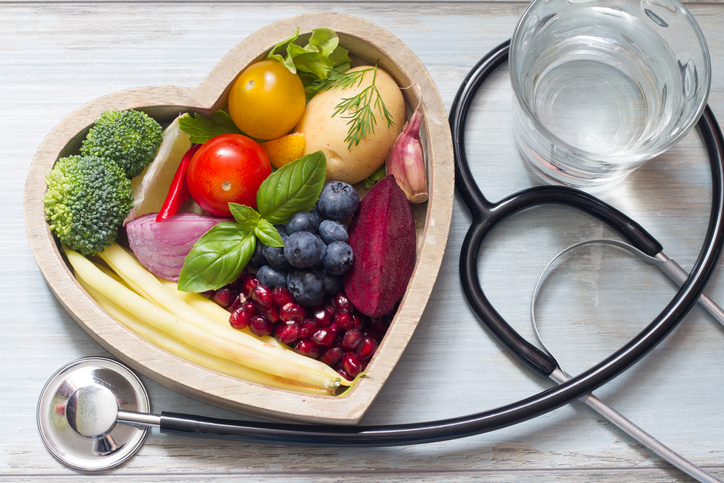Tackling weight gain from COVID-19 quarantine: Nutrition makeover
July 8, 2020
Rosemary Weaver, MPH, RDN, LDN, NCH Wellness Center Dietitian

If you gained unwanted pounds over the past several months, you are certainly not alone. Our last issue featured ways to manage emotional eating; now we’ll focus on a game plan with seven dietary strategies to help you start trending down to a healthier weight.
- Have you been “social distancing” from vegetables? Now is the time to start embracing them again. Aim for a total of four to five servings of vegetables per day. A serving is ½ cup cooked or 1 cup raw. Fill half your lunch and dinner plate with veggies. Ramp up the taste/texture by roasting them in the oven with a spritz of olive oil and herbs or grill alongside your protein for a “lean and green meal.” Combine non-starchy veggies with a seasoned whole grain, like quinoa or farro. Shred or chop fresh veggies and add to salads or enjoy them cut up raw for a snack with nutritious dips, such as our peanut butter hummus recipe below.
- Make drinking your water/achieving your fluid goal a priority for the day. If your physician has not advised you to limit your fluids, use this method: Divide your body weight in pounds by two―this is your fluid goal in ounces for the day―up to a maximum of 128 ounces (one gallon). Eliminate all non-nutritive beverages, including sodas and alcohol. Focus on achieving at least half of your fluid quota as water. Other fluids can include sparkling water, coffee, tea or low-fat or skim milk. In lieu of juices, enjoy whole fruit.
- Include heart-healthy foods based on the Mediterranean or DASH eating styles. Aim to include: fish, beans/legumes, lean poultry, whole grains, vegetables and fruit, low-fat dairy such as yogurt or reduced-fat cheese, olive oil, avocado and nuts/seeds in moderation.
- Make fruit your go-to for a taste of sweetness―include three to four servings/day with your meals and snacks. Freeze fruit in small pieces for a refreshing treat: blueberries, grapes, mangos, pineapple, peaches, strawberries, cantaloupe and watermelon all taste great frozen. Add some fruit to your green salad for a summer-fresh taste. Top it off with a tablespoon or two of a light fruit vinaigrette dressing.
- Manage hunger by eating regular, moderate-portioned meals and snacks spaced about every 3½ to 4¾ hours apart. Include protein at each meal and most snacks. Some examples of protein for snacks: edamame, a low-fat cheese stick, roasted chickpeas, a hard-boiled egg, a small yogurt, low-fat cottage cheese, a closed-fist handful of nuts or seeds or a few tablespoons of hummus or nut butter.
- Cut off evening eating to allow for 10 to 12 hours of an overnight fast from food. (This may not be advised if you have diabetes or need to take evening medication with food; check with your physician.) Recent studies point to the advantages of avoiding late-night calorie consumption for weight loss.
- Burn some calories; build some muscle. Although you can lose weight by reducing calories alone, weight loss is generally not sustainable without a dedication to regular physical activity. Include some strength training activities along with cardio to help maintain lean muscle and support a healthy metabolism. Consult with your physician before increasing your exercise if you have a medical condition or have been very sedentary. Need help getting started? Contact the fitness staff at the NCH Wellness Center at 847-618-3610.
Peanut Butter Hummus
Makes 16 servings/2 tablespoons per serving
Ingredients
- 2 cups canned garbanzo beans, rinsed and drained
- 1 cup + 1 tablespoon water
- ½ cup powdered peanut butter
- ¼ cup natural peanut butter
- 2 ½ teaspoons Stevia sweetener, powdered
- 1 teaspoon vanilla extract
Instructions
Place in food processor; process until smooth. Refrigerate up to one week.
Nutrition Information:
- Calories per serving: 130
- Carbohydrate: 16.5 g
- Fiber: 4 g
- Protein: 7 g
- Fat: 4 g
- Saturated fat: 0 g
- Sodium: 47 mg